Looking for an overlanding communication system for when you are far away from civilization? Maybe you want a grid-down communication setup for your bug out vehicle? You want more than your cellphone.
Why will you need another type of communication device other than your mobile phone?
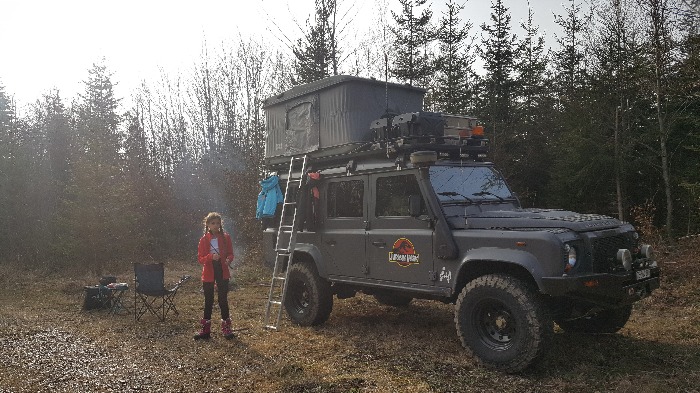
I can assure you that when you are far off-road, you will find yourself in some areas without any mobile network. This is one of the reasons why you will need a Plan B (or C or D) for communicating, but of course it isn’t the only reason.
So, here’s my explanation of all the different overlanding communication devices and information on how they work. Let’s get into it.
The 4 Most Popular Overlanding Communication Methods
- The walkie talkie. Depending on where you live it’s called FRS (family radio service), GMRS (general mobile radio service), and in French: PMR (réseau mobile privé de radiocommunication)
- The CB radio. This is the citizen band
- The ham radio. This is amateur radio. (“Ham” comes an old etymology.)
- The satellite. We don’t use this one. I don’t know it, so I’m not going to talk about it.
The most important fact that you have to be clear about before installing any communication system on or in your vehicle is to know the law of the country in which you are using your radio. Some systems are allowed in some countries, restricted in others, and totally forbidden in yet others. Also, you might need a radio license to use it.
I will talk about our country, Switzerland, because I know the rules. It should be very similar to European countries (with some exceptions), and probably not far off from the United States.
And by the way, it would be nice to let us know further down in the comments how it works where you are.
Now, let’s dive in the details!
No License Required Radios
You have two easy communication options if you do not want to go through the hassle of obtaining a license. These include the walkie talkie and the CB radio. Anyone can buy one of these and start using it today.
Two-Way Radios (Walkie Talkies)
Walkie talkies, also called called PMR 446 (Private Mobile Radio, 446 MHz), work on 8 frequencies of the 446 MHZ UHF band, from 446.000 to 446.200 MZH, with 6.25 kHz to 12.5 kHz between every frequency. This means 8 channels are available. The authorized power is 0.5 watt or 500 mW.
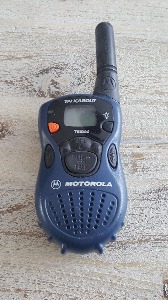
On every frequency you can use the CTCSS (Continuous Tone-Coded Squelch System) or DSC (Digital Selective Calling) functions.
If you activate CTCSS mode, the radio will transmit a sub-audible tone under 300 Hz and only people who activate the same tone will hear you & will be able to talk with you. Read more about the pros and cons here.
It’s almost the same for DSC mode but instead of the tone it will be a non-audible 3 digits digital code. This leaves you more possibilities for confidentiality even though you are still transmitting on the same frequency.
Below are some walkie talkie options if you need recommendations.
PMR 446 Advantages and Disadvantages
There are 8 frequencies available on PMR 446. And within each of them you have 38 CTCSS tones, and also 83 DSC codes available.
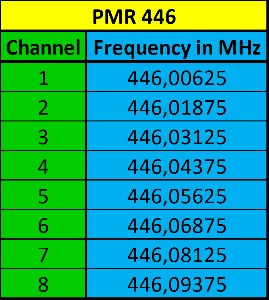
The advantage of this kind of radio is that you can use it without any radio license. They are available everywhere; and are small & portable.
The disadvantage is clearly the low power. Many brands write in the specs «up to 8km» but it’s not the case. If you are lucky you can have 1 to 2 kilometers range. In most cases, the reach is under the specs because of the environment, like surrounding trees or hills.
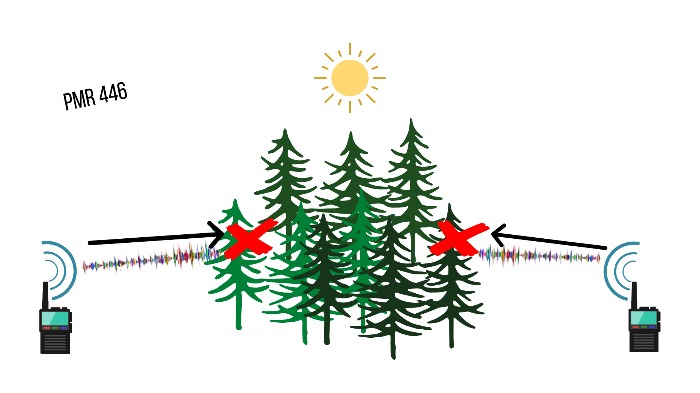
Another disadvantage is that you aren’t allowed to use repeaters to increase the communication range. (I will explain further what are repeaters).
With all this said, you can easily understand that PMR 446 is not the solution for long-range communication. The best use of this kind of radio is when off-roading. For example, to talk from inside the car with someone outside of the car on terrain recognition, or also to have communication when camping.
We use our talkie walkies when we are inside the rooftop tent and the kids are inside the car at night.

The CB (27 MHz)
The standard CB (Citizen Band) radio is probably the best choice when overlanding because free to use without any license requirement. It wasn’t the case a few years ago in Switzerland. You understand why many people are using CB radios and why you’ll have more chances to find people with a CB than a VHF/UHF in a 4WD meetup.

The advantage is that you can use a little more power than PMR 446 radios. You can also use different modes like AM, FM, & SSB (Single Sideband Mobile), which isn’t the case with PMR.
The CB (Citizen Band) is on the 27 MHz band and 40 channels are available. You can use it with a power of 4 watts in AM & FM modes, and up to 12 watts in SSB mode; but most CB transceivers only have FM and AM modes.
In AM (Amplitude Modulation), a radio wave is known as the “carrier” or “carrier wave.” It’s modulated in amplitude by the signal that is to be transmitted.
FM (Frequency Modulation) is less prone to interference than AM. It also has a better sound quality due to the higher bandwidth. However, FM signals are impacted by physical barriers.
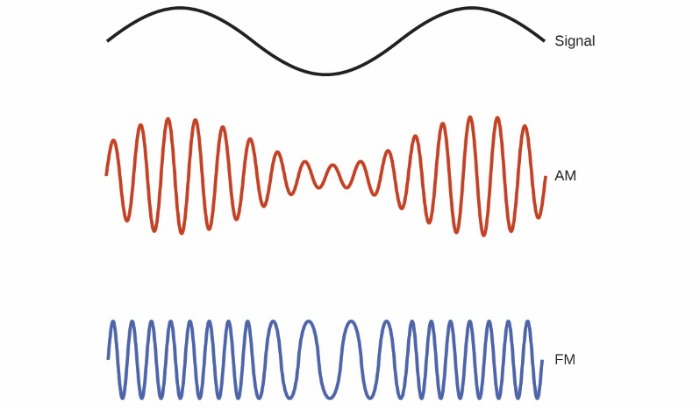
In conclusion, with a good CB transceiver and a good antenna, you can expect to have better results for further more km than with a PMR 446. Of course, always depending on the topography and propagation, like in any radio communication.
Some CB radio options for you:
Ham Radios – License Required
Let’s now talk about ham (amateur) radios. Let’s go first with VHF/UHF bands and then HF bands. This will help better inform the discussion and your decision making on what the best communication setup might be for you.
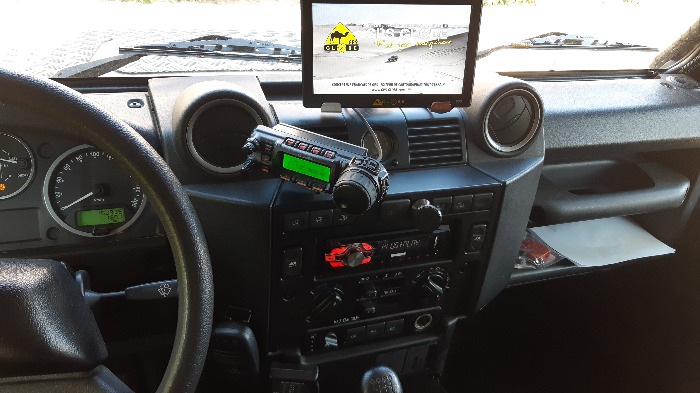
VHF/UHF Bands
In some countries, VHF and UHF radios are forbidden and in others they are legal for personal use. In the United States you need a license.
As I said before, you have to know the rules of every country you are visiting before using them. The reason is that a lot of applications are available on different parts of every band such as military, police, emergency services, and so much more.
Amateur bands are almost the same worldwide and they are:
- The VHF amateur band, also called the 2 meter band, is between 144 MHz & 146 MHz and used in FM or SSB.
- VHF means “very high frequency” and has a band that goes from 30 MHz to 300 MHz.
- The UHF amateur band, also called the 70cm band, is between 430 MHz & 440 MHz and used in FM or SSB.
- UHF means “ultra-high frequency” and has a band that goes from 300 MHz to 3000 MHz.
Some transceivers, like ours, already have ham bands saved in it. We can easily go up and down on every band with the push of a button.
If you have a radio amateur license, you can use those two bands with higher power than a CB. You can use up to 50 watts for transmitting. In conjunction with a well-fixed antenna, you can hope to reach up to 160 km; but with a smaller antenna on your car, you will lose a lot of gain and will only reach around 50 km in local mobile use.

To simplify: the gain of your antenna will depend on the size of it. But, of course, you cannot have a giant base station antenna on your for mobile use.
The first time we installed a big dual-band VHF/UHF antenna it was around 1m50 long and was quickly broken by trees when off-roading. We then decided to install a smaller one with a spring system to add flexibility. We did lose a bit of range but it’s still enough for good local communication up to 50 km (always depending on the topography and propagation).
You can also look at the dBi (decibel relative to isotrope) of an antenna. This will inform you on its performance. In theory, the higher the better. We lost some dBi by choosing a smaller antenna but it was the best choice considering our use of our Land Rover Defender.
Repeaters Repeaters (ha)
The best thing to add some range is to use an amateur radio repeater (download this file on how to use them). You can activate it with a function tone of your transceiver, for example 1750 Hz, but it isn’t always necessary.
You also need to know the repeater’s reception and transmission frequency to program the correct shift. It will then work as a relay and create an amplification of your signal. This means you can reduce the power of emission and talk with other people with only 1 watt, for example, but with a range of 50 to 100km far (sometimes more) without any problems.
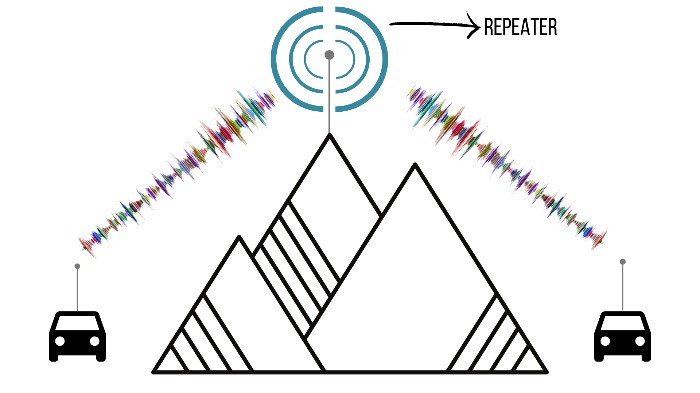
Those repeaters are, in general, on a higher point such as a mountain. The repeaters’ maintenance is exclusively done by licensed amateur radio operators; so unfortunately, sometimes they are off and out of service.

HF Band
Let’s now get into the HF (High Frequency) band, which is between 3 and 30MHz. It’s the primary amateur radio band used in Switzerland and goes up to 1000 watts depending on your license level in SSB mode. Single side band uses only 25% of AM’s regular power, so it’s very efficient. In SSB mode, LSB goes for Lower Side Band and USB goes for Upper Side Band.
HF frequencies for amateur radio go from the 80m band to the 10m band.
There are two bands of VHF frequencies for amateur radio, the 6m and the 2m bands, and one band of UHF frequencies for amateur radio, the 70cm band.
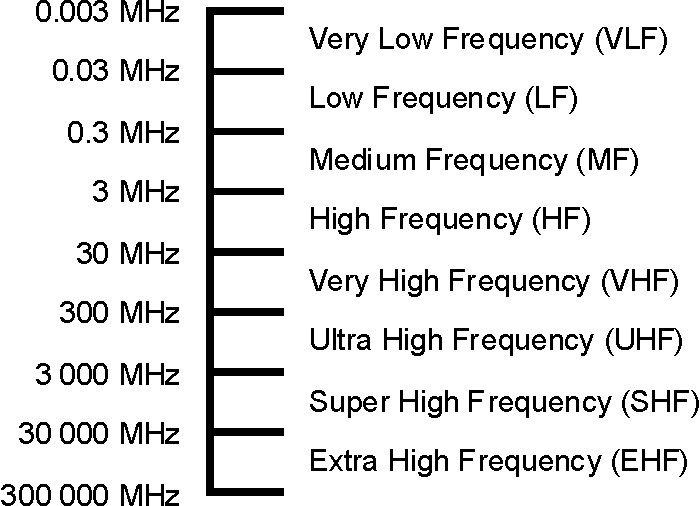
HF isn’t very popular in overlanding communications because transceivers and antennas are bigger than the VHF/UHF ones, but it’s the best way for long-range communications. With a good antenna and a good transceiver, you can communicate all around the world with only 100 watts. This helps explain ham radio’s popularity with preppers.
The only problem is that it depends on a lot of factors: propagation, weather, and many other parameters such as solar or terrestrial factors, which can modify the composition of the atmosphere, especially the ionosphere in our case, where radio waves propagate around earth. But you can easily contact somebody on the other side of the planet with an HF mobile radio station with only 100 watts or less.
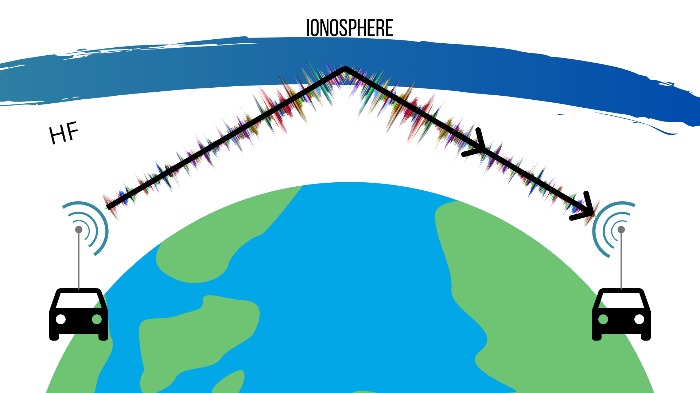
Ham Radio License
If you are interested in getting your ham radio amateur license, you will need to contact your local communication agency. In the United States, that most likely means finding people in your area through the National Association for Amateur Radio. Their ARRL Ham Radio License Manual is the go-to book for preparing for the ham radio license exam.
You need to learn the rules and laws concerning radio communication, and some technical facts about the internal components of radios and antennas. You will also learn how to communicate on ham radios. You will then take an exam and – assuming you pass – you will receive an operator call sign with your country’s call sign.
In Switzerland, there are two levels of license: HB3 with some restrictions and HB9 for the full license. Some countries don’t have the limited version.
Ham Radio Communications
When you are using ham radio bands to make a contact, you will use some codes to speak and give your operator call sign. They are called «Q code» and CW abbreviations. You need to know them to understand operators and have a conversation on those amateur radio bands.

Cost-Effective Ham Radio Choice
Ham is the most effective communication device offering clear signals for mid to very long-range. On the other hand, you will need to pass an exam and pay a license fee to use it.
We see many people buying some Chinese 5 watt portable VHF/UHF radios such as BAOFENG UV-5R, but you must be aware that they’re already HAM radios, and you should have a license to use them. If you don’t have a license and use a ham radio, you do it at your own risk and could encounter problems with authorities.
The CB is a good alternative to ham radios if you don’t want to get a license. It’s used by many people in four wheeling and overlanding, but you won’t have the same result in long-range communication because of the low power.
Other ham radio options include:
Our Overlanding Communication Setup
My husband has a swiss radio license, so that’s why we’ve installed both CB and ham transceivers.

For us, it was important to have a CB because it’s the most popular radio used when overlanding and off-roading. We chose a CB President Lincoln 2 because it’s more than just a CB radio. We can say it’s a ham transceiver with CB functions.
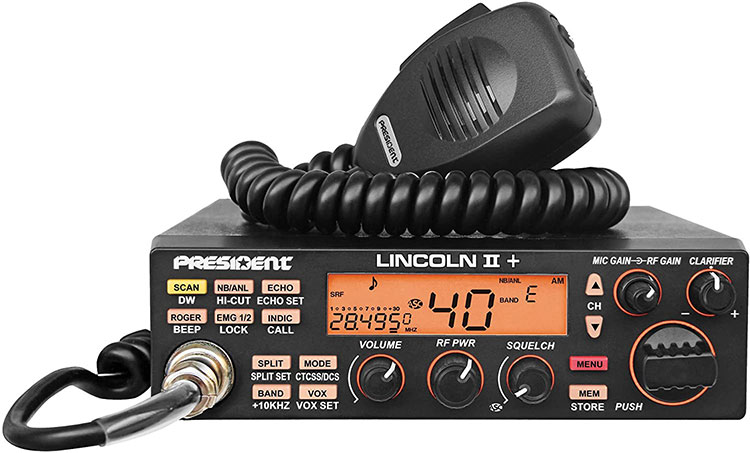
We can use it from 26 to 30 MHz in AM, FM, or SSB. Which isn’t the case with a basic CB transceiver. Another good feature is the integrated SWR-meter.
With this CB, we are using a Firestik II 3 feet flex fiberglass antenna mounted on the roof rack with a heavy-duty flexible spring. We have used this setup for years now and experienced no problems with the trees when off-roading. It has not broken (yet). This antenna uses a male thread of three eights of an inch times 24. This equals a standard CB mount thread in the US.
For HF/VHF/UHF, we installed a Yaesu 857D because it’s a very compact and complete ham transceiver. You can also deport the display panel, which is great when installing in a car. While that model is no longer available, it is not that different from the Yaesu FT-891.
We can operate from many modes such as FM, AM, SSB, and CW on all HF amateur bands from 80m to 10m, so from 3 to 30 MHz.
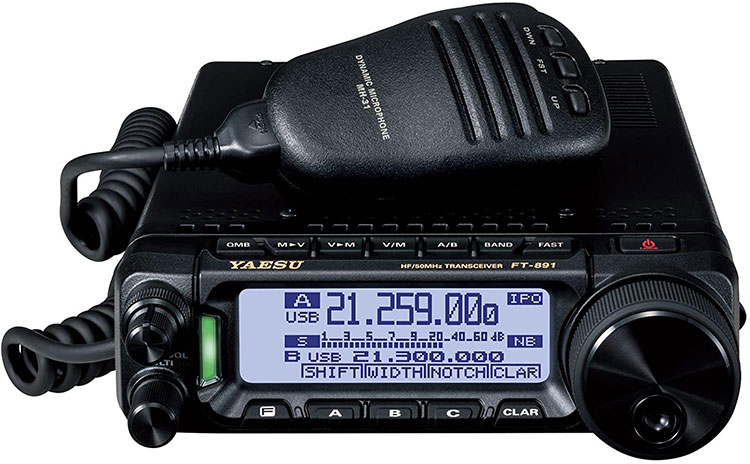
For this radio, we have a Yaesu ATAS 120 antenna for HF transmissions. It’s a screw-driver type antenna and it can tune and adjust automatically. Depending on the band you’re using, the antenna will go higher or lower because of its small electric motor.
We are using this antenna only for long-range hobby communications, it isn’t always mounted on the vehicle.
Also connected to this radio, but for VHF/UHF, we have a small Diamond dual-band antenna for local use but also used with repeaters on the 2m and 70cm band.
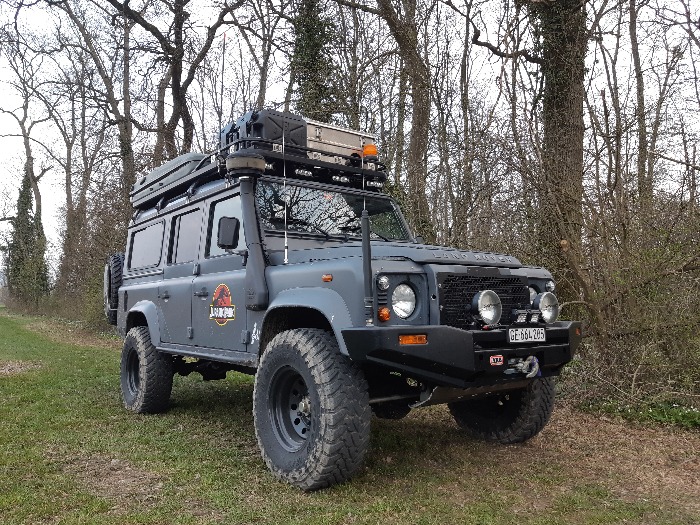
Over and Out
There you are! You now know almost everything about the different radios used in 4 wheeling & overlanding. One thing we don’t have is a police scanner, but we haven’t found the need for one.
What would you choose?
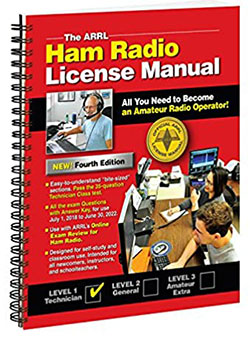
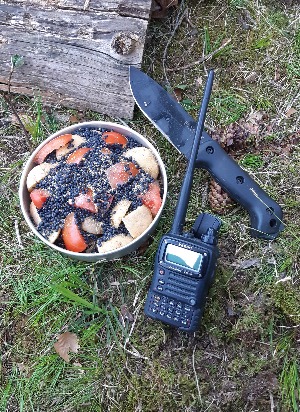

5 comments
Very comprehensive explanation, thanks
Thanks a lot for your message Emil.
Great article – cheers
Glad you enjoyed reading it, thanks!
While repeaters are not allowed on many radio services (CB, FRS,Murs, ECT) you can get around this (legally) by setting up a Simplex Repeater as long as the radios are in a fixed location.
Won’t work with a mobile station.
A Simplex Repeater is nothing more then 2 antennas connected to each other by a piece of coax.
Point a beam at each radio and the antennas will send a bit of the radio signal to the other beam.
It uses no power at all.
I have this setup in my basement Ham shack. I have a 15 element beam pointing att a 900 MHz ham repeater and a upside-down ground plane in the basement for my 900 MHz ht. It works great and allows me access to the repeater that I could not hit unless I went outside.
Do a search for “Simplex Repeater” to get more info on it.